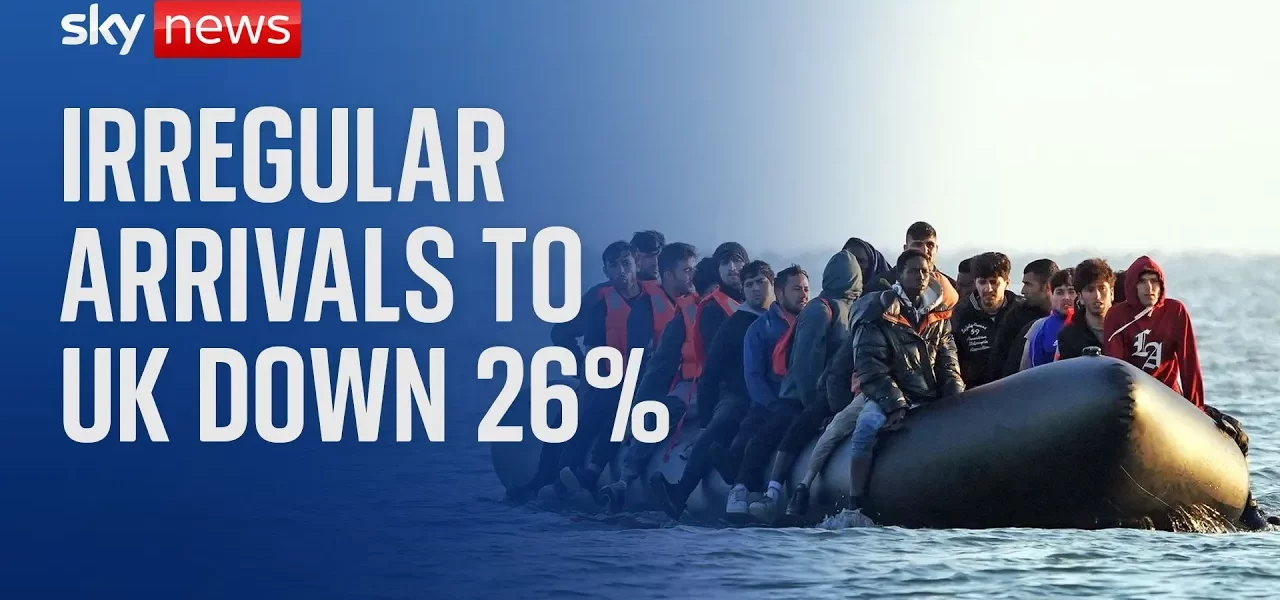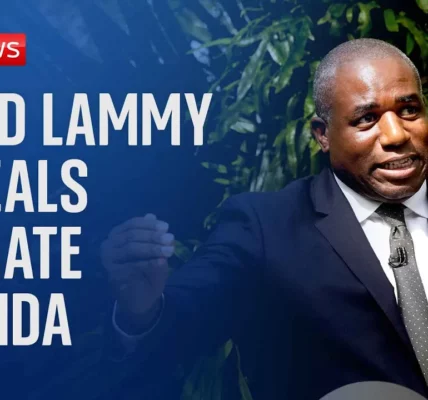UK Immigration Figures: Analyzing Recent Trends and Government Policies

This article delves into the latest immigration statistics released by the Home Office, highlighting key trends in irregular arrivals, asylum claims, and the impact of governmental policies on these figures.
Introduction
The Home Office has recently published its latest immigration figures, revealing a significant drop in irregular arrivals to the UK. With almost 39,000 individuals arriving irregularly in the year leading up to June, this marks a notable decline of 26%. In particular, small boat crossings have decreased by 29%, indicating a shift in the patterns of immigration. However, despite these reductions, the complexity of the situation remains, as a vast majority of those arriving claimed asylum, and a staggering 96% of these applications were still undecided by the end of the reporting period. This article will analyze these figures, explore the implications of government policies, and consider the ongoing challenges in managing immigration effectively.
Current Trends in Immigration
The latest statistics provide a comprehensive overview of the current state of immigration in the UK. Key points from the report include:
- 39,000 irregular arrivals in the past year.
- A 26% decrease in overall irregular arrivals.
- A 29% reduction in small boat crossings compared to the previous year.
- 81% of irregular arrivals claimed asylum upon arrival.
- 96% of asylum applications remained undecided as of June.
Understanding the Impact of Small Boat Crossings
Small boat crossings have become a focal point in discussions surrounding immigration policy. The decrease in these crossings, while notable, must be contextualized within the broader historical trends that have seen record levels of arrivals in previous years. The conversation often shifts to the efficacy of policies aimed at curbing these crossings. Critics argue that a mere reduction in numbers does not equate to successful immigration management.
The Asylum Application Process
With such a large proportion of irregular arrivals claiming asylum, the state of the asylum application process is critical. The fact that 96% of these applications remain undecided raises questions about the efficiency and effectiveness of the current system. Delays in processing can lead to prolonged uncertainty for individuals seeking refuge, which exacerbates the challenges faced by the immigration system.
Government Policies and Their Effectiveness
The political landscape surrounding immigration has shifted, particularly with the change in government. The current government, led by Labour, is examining the previous administration’s approaches to immigration control.
Critique of Previous Government Policies
Ministers have been vocal in their criticism of the former Conservative government’s policies. Katherine McKinnell highlighted that the previous government’s initiatives, including the controversial Rwanda plan, were ineffective and described them as mere gimmicks. Current officials are focused on processing individuals upon their arrival, ensuring that those entitled to stay can do so, while those who are not are returned.
Recent Improvements in Immigration Management
Despite the criticisms, recent Home Office data indicates that there have been improvements in certain areas:
- Increased enforcement of returns, showing a 48% rise.
- A notable 87% of enforced returns involved individuals from Albania, attributed to a prior agreement between the UK and Albanian governments.
- Reductions in various visa categories including a 13% drop in study visas and an 11% decrease in work visas.
These figures suggest that while challenges remain, there are signs of progress in managing immigration effectively.
Political Implications and Future Considerations
The implications of these immigration figures extend beyond just statistics; they play a crucial role in shaping political narratives and future policies. As political commentators analyze the data, it appears that there may be attempts from Conservative voices to claim credit for the reductions in immigration numbers. However, the debate over the efficacy of past policies continues.
Future of Immigration Policy
As the Labour government continues to navigate these complexities, the focus is likely to remain on effective processing and returning individuals who do not qualify for asylum. The success of these policies will likely be scrutinized closely as they will have significant implications for public perception and future electoral prospects.
Potential Changes in Leadership Strategy
With the backdrop of these developments, Prime Minister Rishi Sunak may reflect on strategic decisions regarding elections and policy priorities. The interplay of economic factors, interest rates, and immigration trends will undoubtedly influence future political strategies.
Conclusion
In summary, the latest immigration figures reveal a complex landscape marked by a decline in irregular arrivals and ongoing challenges within the asylum application process. While some may argue that previous government policies have had an impact, it is clear that the current government is focused on repairing the system and implementing effective management strategies. As immigration continues to be a central issue in UK politics, it is essential for both government and society to engage in informed discussions on the best way forward. For more insights into immigration policy and statistics, check out our related articles on immigration challenges and policy analysis.
“`




